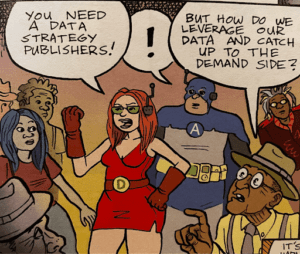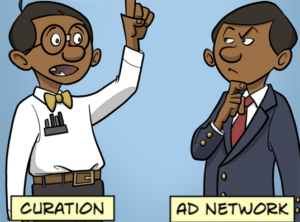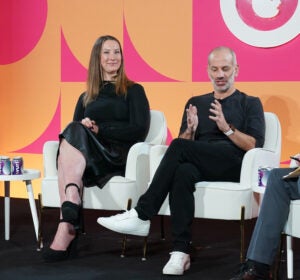 At yesterday’s AlwaysOn OnMedia NYC 2011 event at The Paley Center in New York City, ad technology companies gathered to talk ads, tech and business.
At yesterday’s AlwaysOn OnMedia NYC 2011 event at The Paley Center in New York City, ad technology companies gathered to talk ads, tech and business.
One morning session, in particular, pricked up the ears of the data-driven digerati as reporter Emily Steel of The Wall Street Journal appeared to ably moderate a panel discussion comprised primarily of ad technology executives including: Joe Zawadzki of MediaMath; Amit Avner, Taykey; Marc Theeuwes, Nokia Growth Partners (a Rocket Fuel investor); Hooman Radfar of Clearspring; and Brian O’Kelley of AppNexus.
Steel guided the panelists to examine the high-level issues as opposed to getting into the weeds of the ad technology business. Inevitably, privacy came up and Steel asked the panelists what they were each doing to stay ahead of consumer privacy challenges, and if they self-police and root out “bad actors.” For a brief moment, tension crept in as the audience wondered “What They Know” or, at least, what they think.
CEO Joe Zawadzki of demand-side platform MediaMath stressed the importance of industry organizations such as the Network Advertising Initiative (NAI) in policing. He went further on the topic of auditing ecosystem companies saying that “Having an automated system where – in addition to the [capabilities] of the NAI – a TRUSTe for data would be very valuable.”
Brian O’Kelley, CEO of real-time ad platform AppNexus, shared his thoughts on the topic saying, “When I go home every night, and say ok, what did I do today? Well, I served a bunch of ads -[I then ask myself] why did that matter? It mattered because in fact that’s what makes all these websites free for all of us to go visit. That’s what pays people to write great articles. That’s what pays Emily, you know, if nothing else.”
Steel quipped, “We have a subscription model.” The crowd responded with a smattering of applause in recognition of the Journal’s paywall strategy.
O’Kelley still disagreed saying, “I’ve met your sales folks on the ad side. And I think you still get paid by ads… But, that’s the point -fine, the New York Times can put up a paywall up as well, and we can see that happen. But, it’s not free. Content is only free if we have advertising to pay for it. I think we need to find a balance where we don’t restrict what high quality companies can do with a little bit of data – not personally-identfiable, not scary-creepy stuff that makes you go, “How did they know that about me?” – but we do want to make sure that the ads are relevant and that they make the advertiser successful and happy. If we don’t, we’re going to see those advertisers pull back. And, we’ll see a lot of this content that is being produced, not being produced….”
Clearspring’s CEO Hooman Radfar pointed to Facebook as an example of the powerful personalization that can be possible for advertising in general and how the consumer can benefit as long as standards and respect for the his or her privacy are maintained.
The online privacy discussion continues.
By John Ebbert












